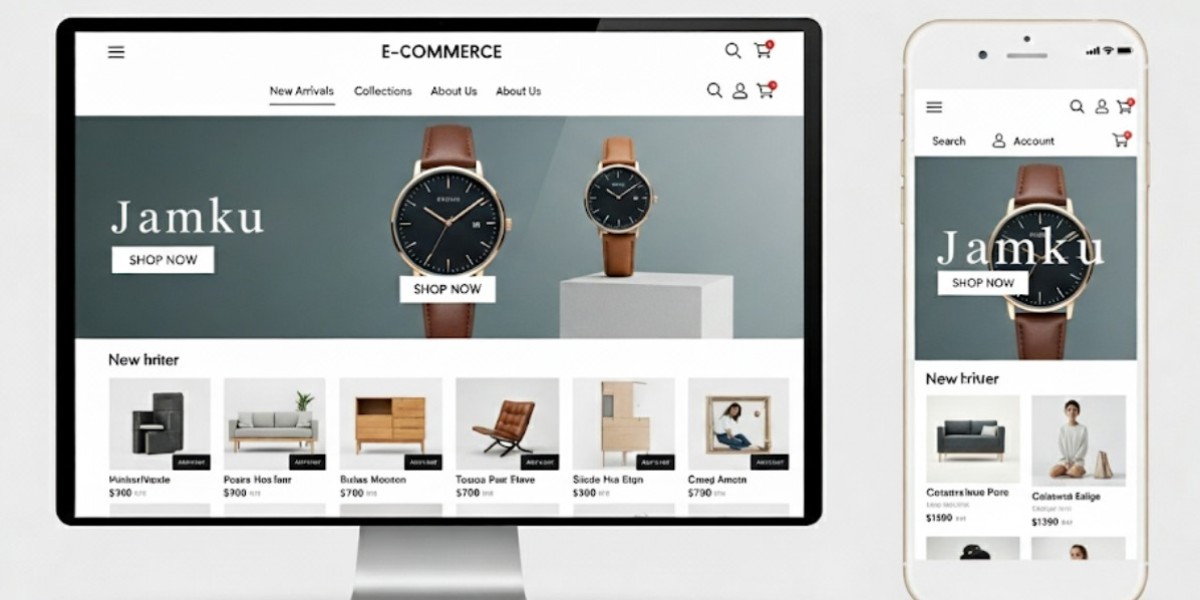An online store is more than a product listing—it’s a tool to guide customers toward a purchase. In a crowded digital market, a poorly designed site can push shoppers away in seconds. Smart design simplifies the buying process, fosters trust, and turns browsers into buyers.
Whether you’re starting fresh or optimizing an existing store, these five design features are critical for driving sales.
1. Clear, User-Friendly Navigation
Navigation is the cornerstone of any ecommerce site. If shoppers can’t find products quickly, they’ll leave for a competitor’s store.
Imagine a physical shop: products are organized intuitively, and signage guides you effortlessly. Online, categories should align with how customers think, not just internal business structures. A search function must return precise results—not errors or irrelevant items.
Avoid menu clutter. A long list of categories confuses users more than it helps. Broad sections with filters let users refine their search without feeling overwhelmed.
A website designer often prioritizes the user journey, ensuring customers move smoothly from landing page to checkout. Clear navigation keeps shoppers focused and boosts purchase likelihood.
2. Mobile-Optimized Layout
Mobile shopping now dominates ecommerce, with most traffic coming from smartphones. A site that’s not mobile-friendly is losing potential sales every day.
Responsive design—where the site adjusts to any device—is the starting point. But mobile users demand more: buttons that are easy to press, text that’s clear without zooming, and forms that are quick to fill out.
Checkout is a major mobile challenge. Typing details on a small screen is tedious, so features like autofill, saved addresses, or payment options like Google Pay make a big difference. A website designer can optimize mobile layouts by testing across devices, ensuring a seamless experience.
If your mobile site feels clunky, customers will abandon their carts and shop elsewhere.
3. Compelling Visual Content
Online shoppers rely on visuals to evaluate products since they can’t touch or try them. Poor images make products seem low-value, while high-quality visuals enhance their appeal.
Each product needs multiple high-quality photos—different angles, zoom-ins, and lifestyle shots, like a watch on a wrist. These help customers imagine owning the item.
Videos are even more effective. A short clip showing a product’s features or a dress’s fit in motion answers questions and builds confidence, reducing returns and encouraging purchases.
Investing in visuals often outperforms adding new products. A website designer can ensure layouts highlight these assets, but the quality of the images and videos is what matters most.
4. Streamlined, Safe Checkout
Cart abandonment is a persistent ecommerce problem. Many shoppers add items but bail if the checkout feels too long or unsecure.
A great checkout is fast and clear. Always allow guest checkout—forcing account sign-ups pushes users away. Limit form fields to essentials: name, address, payment info. Optional fields can follow later.
Progress bars, like “step 2 of 3,” keep users motivated. Transparency about costs, like shipping or taxes, prevents surprises that kill sales.
Security is crucial. Visible SSL certificates, trusted payment logos, and secure badges reassure customers. A website designer can integrate these elements while ensuring data protection, making checkout feel reliable.
5. Confidence-Building Features
Trust is everything in ecommerce. Without it, even the best products and designs won’t convert.
Shoppers need to know they’re buying from a legitimate business. Reviews and ratings offer social proof. A transparent return policy lowers the risk of buying. Clear contact details—email, phone, or address—show there’s a real company behind the site.
Third-party endorsements, like badges from PayPal or security firms, add credibility. These small details signal that transactions are safe.
Even the site’s appearance builds trust. A dated or glitchy design feels untrustworthy, while a clean, professional look reassures visitors. A website designer can craft a polished aesthetic that instills confidence from the start.
Bringing It All Together
These five features—navigation, mobile design, visuals, checkout, and trust signals—form a seamless shopping experience. Each removes a potential obstacle, guiding customers toward a purchase with confidence.
Store owners often overlook issues that frustrate new visitors. Testing the site yourself or working with a website designer Singapore can reveal fixes, like refining navigation or clarifying checkout steps, that lift conversions noticeably.
At its heart, ecommerce design is about simplicity, ease, and trust. Master these, and your store will give customers every reason to buy—and no reason to leave.












